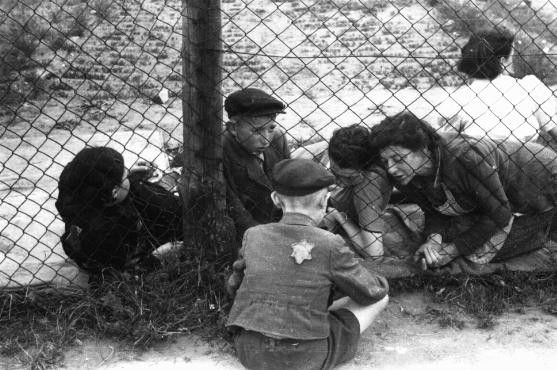
Children during the Holocaust
Children were especially vulnerable to Nazi persecution. Some were targeted on supposed racial grounds, such as Jewish youngsters. Others were targeted for biological reasons, such as patients with physical or mental disabilities, or because of their alleged resistance or political activities. As many as 1.5 million Jewish children alone were murdered or died at the hands of Nazi officials or their collaborators.
Key Facts
-
1
The Nazis did not single out children specifically because they were children, but because of their alleged membership in dangerous racial, biological, or political groups.
-
2
Along with elderly people, children had the lowest rate of survival in concentration camps and killing centers. People over fifty years of age, pregnant women, and young children were immediately sent to the gas chambers at Auschwitz-Birkenau and other killing centers.
-
3
Thousands of Jewish children survived, however, many because they were hidden. With identities disguised, and often physically concealed from the outside world, these youngsters faced constant fear, dilemmas, and danger.
Children were especially vulnerable in the era of the Holocaust.
The Nazis advocated killing children of “unwanted” or “dangerous” groups either as part of the “racial struggle” or as a measure of preventative security. The Germans and their collaborators killed children for these ideological reasons and in retaliation for real or alleged partisan attacks.
Nazi Germany and its collaborators killed about 1.5 million Jewish children and tens of thousands of Romani (Gypsy) children, 5,000–7,000 German children with physical and mental disabilities living in institutions, as well as many Polish children and children residing in the German-occupied Soviet Union. Jewish and non-Jewish adolescents (13–18 years old) had a greater chance of survival, as they could be used for forced labor.
The fates of Jewish and non-Jewish children can be categorized in the following ways:
- children killed when they arrived in killing centers
- children killed immediately after birth or in institutions
- children born in ghettos and camps who survived because prisoners hid them
- children, usually over age 12, who were used as forced laborers and as subjects of medical experiments
- children killed during reprisal operations
- children killed in mass shootings conducted by the Einsatzgruppen and other forces in the German-occupied Soviet Union
In the Ghettos
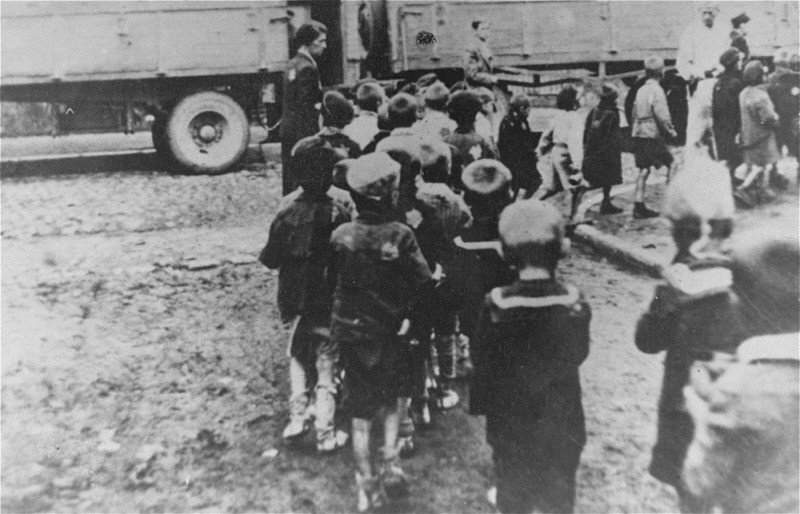
In ghetto settings, Jewish children died from starvation, disease, and a lack of adequate clothing and shelter. The German authorities were indifferent to the high death rates. They considered most of the younger ghetto children to be unproductive and hence “useless eaters.” Because children were generally too young to be used for forced labor, German authorities often selected them, the elderly, ill, and disabled, for the first deportations to killing centers, or as the first victims led to mass graves to be shot.
These trucks bode no good, I mean especially for the little girl.
—Brigitte Friedmann Altman
Only later did I find out that my mother had gone out of the ghetto, sold a diamond and pearl ring to get me an orange. That was the last birthday gift from my parents.
—Gerda Weissmann Klein
In the Killing Centers
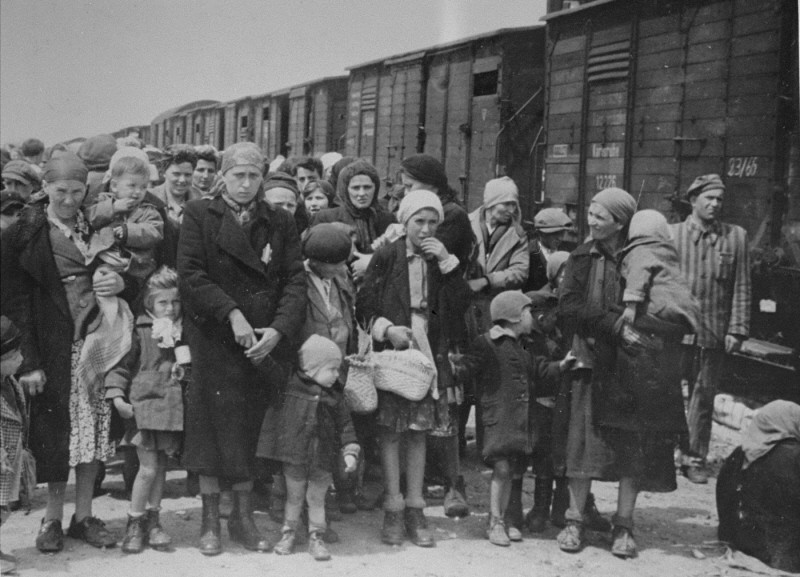
Camp authorities sent the vast majority of young Jewish children directly to the gas chambers upon arrival at Auschwitz-Birkenau and other killing centers. SS and police forces in German-occupied Poland and the German-occupied Soviet Union shot thousands of children at the edge of mass graves along with their parents.
Sometimes the selection of children to fill the first transports to the killing centers or to provide the first victims of shooting operations resulted from the agonizing and controversial decisions of Jewish council (Judenrat) chairmen. The decision by the Judenrat in Lodz in September 1942 to deport children to the Chelmno killing center was an example of the tragic choices made by adults when faced with German demands. Janusz Korczak, director of an orphanage in the Warsaw ghetto, however, refused to abandon the children under his care when they were selected for deportation. He accompanied them on the transport to the Treblinka killing center and into the gas chambers, sharing their fate.
Non-Jewish Children
Non-Jewish children from certain targeted groups were not spared. Examples include
- Romani (Gypsy) children killed in Auschwitz
- 5,000-7,000 German children, the vast majority of them non-Jews, killed as victims of the Euthanasia Program
- Children murdered in reprisals, as in the destruction of the Czech town of Lidice; and
- Children shot as civilians in the German-occupied Soviet Union together with their parents.
In Concentration and Transit Camps
The German authorities also incarcerated a number of children in concentration camps and transit camps. SS physicians and medical researchers used a number of children, including twins, in concentration camps and killing centers like Auschwitz for medical experiments which often resulted in the deaths of the children. Concentration camp authorities deployed adolescents, particularly Jewish adolescents, at forced labor in the concentration camps, where many died because of conditions.
The German authorities held other children under appalling conditions in transit camps and concentration camps. They also interned non-Jewish orphaned children whose parents the German military and police units had killed in so-called anti-partisan operations. Some of these orphans were held temporarily in the Lublin/Majdanek concentration camp and other detention camps.
In Occupied Poland and the Occupied Soviet Union
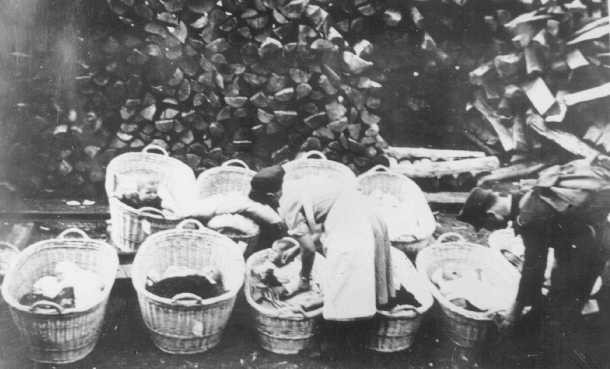
In their "search to retrieve 'Aryan blood'" in German-occupied areas, SS race experts ordered hundreds of children in occupied Poland to be kidnapped and transferred to the Reich. The children were to be adopted by racially suitable German families. Although the basis for these decisions was allegedly "race-scientific," often blond hair, blue eyes, or fair skin was sufficient to merit the "opportunity" to be "Germanized."
Resistance and Rescue
I was very lucky, and now and then I would bring a slice of bread, I would bring a carrot, or a potato, or an egg, and these were very, very great achievements. My mother made me promise that I wouldn't do it anymore, but I disobeyed.
—Charlene Schiff
In spite of their acute vulnerability, some children discovered ways to survive. Because of their small size, children could smuggle needed food, medicines, and supplies from the outside into ghettos in German-occupied eastern Europe. Children in youth movements later participated in underground resistance activities. Many children escaped with parents or other relatives—and sometimes on their own—to family camps run by Jewish partisans.
Kindertransport (Children's Transport) was the informal name of a rescue effort between 1938 and 1940 which brought thousands of refugee Jewish children (without their parents) to safety in Great Britain from Nazi Germany and German-occupied territories.

Some non-Jews hid Jewish children and, as in the case of Anne Frank, entire families as well. In France, almost the entire Protestant population of Le Chambon-sur-Lignon, as well as many Catholic priests, nuns, and lay Catholics, hid Jewish children in the town from 1942 to 1944. In Italy and Belgium, many children survived in hiding.
After the War
After the surrender of Nazi Germany, ending World War II, refugees and displaced persons searched throughout Europe for missing children. Thousands of orphaned children and juveniles found themselves in displaced persons (DP) camps. Many surviving Jewish children fled eastern Europe with or without their families as part of the mass exodus (Brihah) to the western zones of occupied Germany, en route to the Yishuv (the Jewish settlement in Palestine). Through Youth Aliyah (Youth Immigration), thousands migrated to the Yishuv, and then to the state of Israel after its establishment in 1948.
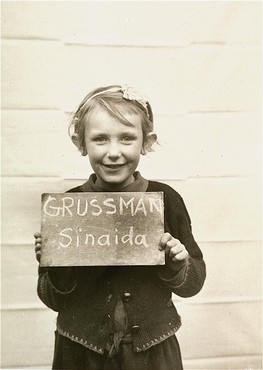
Critical Thinking Questions
Why were children especially vulnerable to Nazi persecution?
How and why do repressive regimes justify the persecution and/or murder of children?
How can motivations and pressures to harm or murder children be deflected or countered?
What risks, pressures, and motivations confronted rescuers when they tried to help children?

